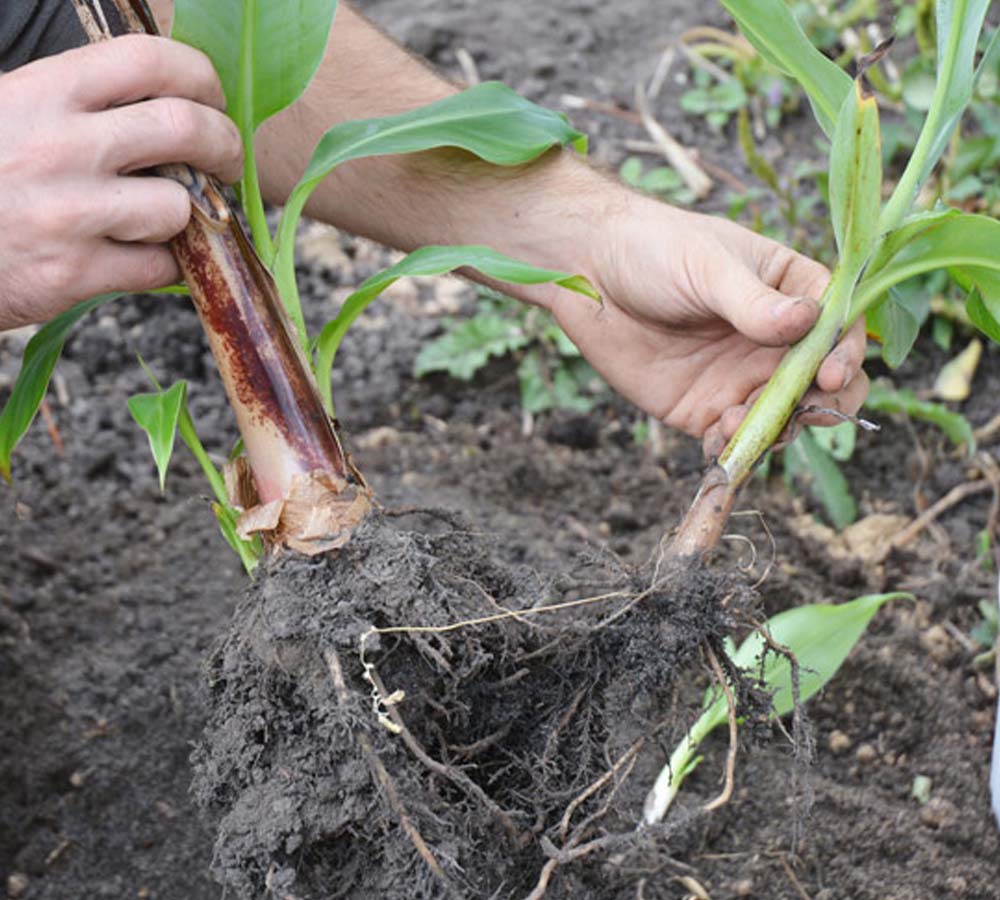How to grow Potatoes
Growing your own potatoes and unearthing your first crop ready for the kitchen table is incredibly rewarding.
Potatoes are easy to grow and can even be grown in bags or pots, so a large garden is certainly not necessary to grow the humble and versatile potato – the nations favourite vegetable!
Potatoes fall into three main categories according to when they are planted and harvested – new, or first early potatoes which are harvested in early summer and eaten fresh, second earlies which are harvested in late summer and again must be prepared and eaten fresh as they cannot be stored for too long, and maincrop which are harvested in late summer to autumn and will last much longer in a cool and dark, dry place.

Key Information
Soil pH
Position
Hardiness


Where & when to plant Potatoes
When you plant your potatoes depends on the variety or varieties which you choose to grow, where you are in the country, and whether you are growing in the ground or in pots.
Generally speaking, first earlies are planted in late March, second earlies in early to mid-April, and maincrops in mid to late-April.
Seed potatoes can be purchased from late winter and ‘chitted’ indoors to encourage shoots to sprout prior to planting.
How to plant Potatoes
To chit your potatoes, place the tubers in cardboard eggboxes or shallow trays with the end which has the most eyes (tiny bumps or dents which will form shoots) visible. Place the boxes in a bright spot which is frost-free, and you will see growth forming within a couple of weeks. If you are growing early potatoes, remove weaker shoots, leaving 4 of the strongest to grow on, otherwise your crops will be too small.
In winter to early spring, add plenty of well-rotted manure to the bed you are planning to plant up as potatoes like a rich medium to grow in. When it is time to plant according to variety, dig trenches 12cm deep and space early varieties in the soil 30cm apart in rows 60cm apart with the shoots pointing up. Space the larger maincrop varieties slightly further apart at 37cm in the ground in rows 75cm apart from one another. Cover the tubers up with soil and add a scattering of bonemeal or general fertiliser and water in well.
Potatoes can be grown in large, deep pots, or sacks. To begin with, add just 15-20cm of compost or enriched soil to the bottom of the pot before planting and covering over your potato and watering.

What to plant with Potatoes
How to care for Potatoes
Potatoes are tender plants and require protection from late spring frosts and sunlight which will cause your crops to turn green and inedible. In order to do this, and to produce strong healthy plants which yield the best crops, a gardening method called earthing up is used.
To earth up, each time you notice green shoots at soil level from your plants, stems should be covered up with a layer of earth before they reach about 23cm. Use a garden spade or rake to gently mound the soil up into a ridge.
Whether you are growing in open ground or containers, you will need to do this several times throughout the season until shoots appear bearing flowers. Water your potato plants well, particularly first and second early varieties, container potatoes and especially during dry periods.
Keep the soil around your potatoes as weed free as possible by hoeing or hand weeding regularly.
When your plants have flowered and the foliage starts to wilt and turn yellow, your tubers have reached maturity and are ready to be harvested.
Dig your potatoes up using a garden fork, being careful not to spear and damage your precious crops.
First and second early varieties are best kept in a cool place or fridge as they do not store as well as maincrops. Or you can dig and enjoy your potatoes as and when you require them straight from the ground - earth is the perfect cool storage space!
Avoid growing potatoes, and members of the potato family on the same ground for consecutive years. Ideally you should leave at least 3 years before growing potatoes in the same spot to avoid blight and other diseases and pests which can be harboured in the ground or on old tubers.
If you would like any further advice on growing potatoes, please do give our friendly and knowledgeable Customer Care Team at Hayloft a call who will be happy to help advise you on getting the best from your varieties.
How to propagate Potatoes
It is possible to propagate potatoes by cuttings.







